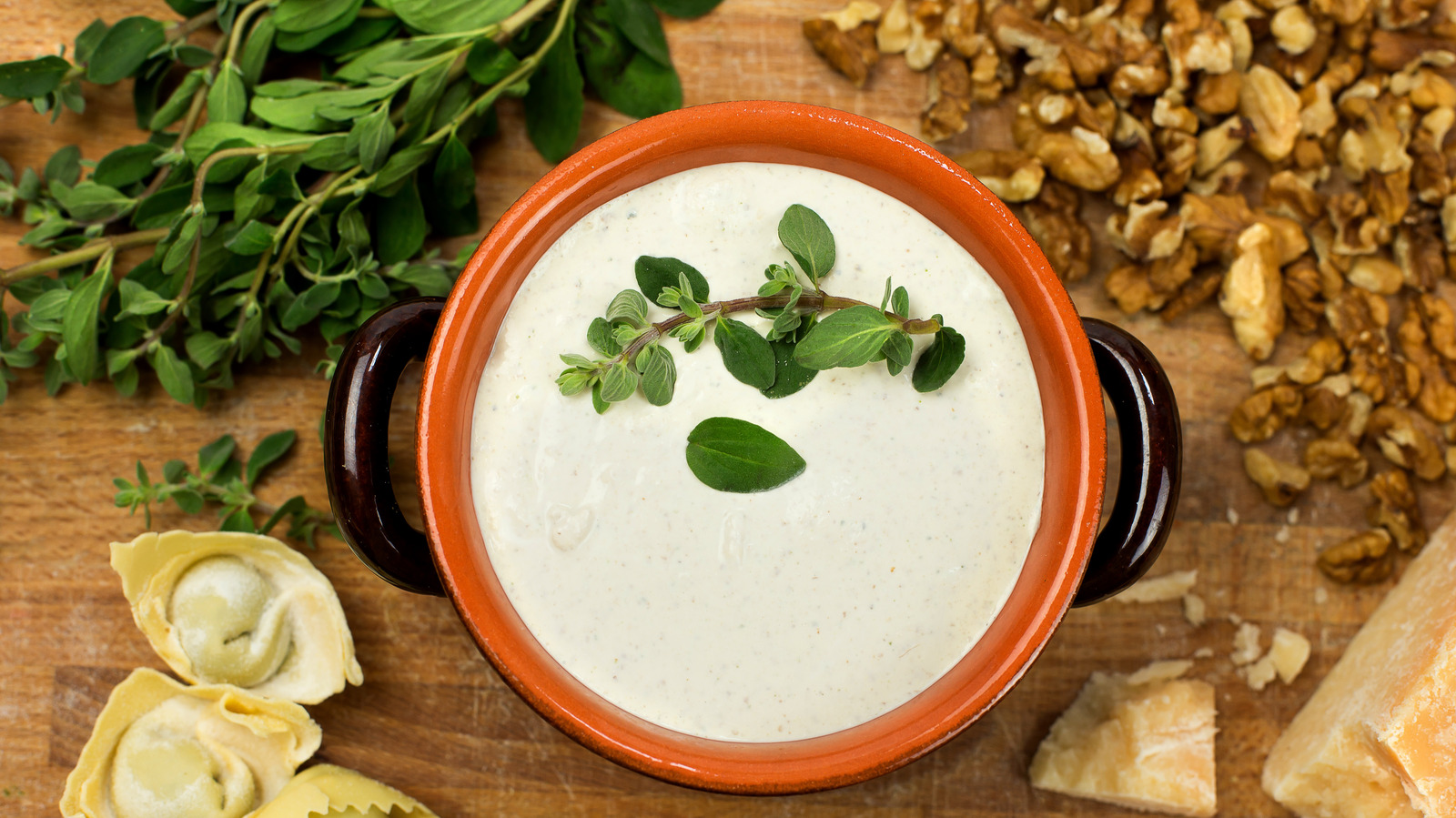
Walnut Sauce Is A Delightful Staple In The Italian Riviera – Tasting Table
Italy is the land of a 1,000 delicious sauces. From beefy bolognese to basil-rich pesto, there’s hardly a sauce not worth incorporating into your nightly pasta routine. But there’s one sauce that hasn’t received the fanfare that the others have and the world of pasta is sorely missing out. Without further ado, meet creamy, dreamy salsa di noci, also known as a Ligurian walnut sauce.
At first blush, salsa di noci seems completely unique in the realm of Italian sauces. It’s an uncooked, tomato-less mix that contains very few herbs. This has much to do with the home of the sauce, Liguria. Comprising a good portion of the Italian Riviera, Liguria is a region most well-known for its colorful capital city Genoa (the birthplace of pesto).
Unlike other parts of Italy, where tomatoes, seafood, and meat reign supreme, Liguria is a foraging community, celebrating wild herbs, nuts, mushrooms, and grains in their cuisine. Their dishes are vegetarian, heavily emphasizing vegetables, nutty sauces, and handmade pasta. So how does the walnut sauce fit into this grand Ligurian tradition?
The story behind Ligurian walnut sauce
 Paul Evan Green/Shutterstock
Paul Evan Green/Shutterstock
Ligurian cuisine use mortar-crushed nuts in its sauces, like, most notably, the pine nuts used in pesto. Salsa di noci is yet another nutty variant of pesto, but some claim it might be even older than its green cousin. While the base of the sauce had roots from a bread, garlic, and oil sauce known as agliata, a recipe from ancient Rome, the walnut addition was purely Ligurian.
Walnuts came to Liguria more than a 1,000 years ago through trade with Persia, and they quickly integrated that rich ingredient into their sauces. There’s even a similar Georgian walnut sauce, Bazhe, that also came from trade with Persia. The sauce is traditionally made from fresh walnuts, which are harvested in late September in Italy. These fresh walnuts add a delicately sweet not to salsa di noci, but today, dried walnuts are much more commonly used.
How to make your own salsa di noci
 Francesco83/Shutterstock
Francesco83/Shutterstock
The initial base of the walnut sauce is traditionally made by pounding walnuts into a smooth paste with a mortar and pestle. Then these finely ground walnuts are added to cream or milk-soaked bread (crusts removed), which adds a boost of creamy richness, and garlic and parmesan or Pecorino Romano, which cuts through the richness with spice and salty umami. A bit of good quality olive oil will be stirred in as well, to help the consistency. Finally, to loosen up the thickness of the sauce, cooks will often incorporate a good bit of pasta water into the mix before adding in the pasta.
Of course, in our modern times, much of this grinding work is now done in the food processor rather than in the mortar and pestle. Some cooks will incorporate a bit of pine nuts into the mix, but most recipes will stick to the traditional walnut. Other chefs will recommend boiling the walnuts before grinding, to make it sweeter, but this isn’t necessary. For a fresh herb touch, some recipes recommend finishing with parsley, while others will support incorporating thyme or marjoram directly into the sauce. It’s fairly flexible, but only a small amount of herbs are used, as it’s important that the walnut flavor shines the brightest.
The many ways to serve this gorgeous pasta sauce
 Antonio S/Shutterstock
Antonio S/Shutterstock
Traditionally speaking, salsa di noci is combined with triangle-shaped Genoa ravioli known as pansotti, also known as “pot bellies.” The most classic recipe for pansotti calls for local cheese and wild herbs and greens (preboggion), but cooks in a pinch can make a version of it with the more readily available ingredients of spinach and ricotta. Chard, Belgian endive, and borage can also be used in place of spinach, but the main thing is to have a hearty, earthy green paired with a nice mild cheese. Other common pasta pairings for salsa di noci is trofie, cork screw-like pasta, and corzetti, coin-shaped pasta.
Still, this sauce will equally work on any other bed of pasta, like fettuccini or gnocchi. Other ravioli could benefit from a touch of salsa di noci, just make sure it’s a ravioli without too strong of flavors, like earthy mushroom or mild chicken-filled ravioli. Or you can enjoy this sauce in an even more simple way, spreading it on a slivers of crostini like an aromatic dip. Either way, it’s high time you become acquainted with this creamy walnut sauce from the Italian Riviera.

























































